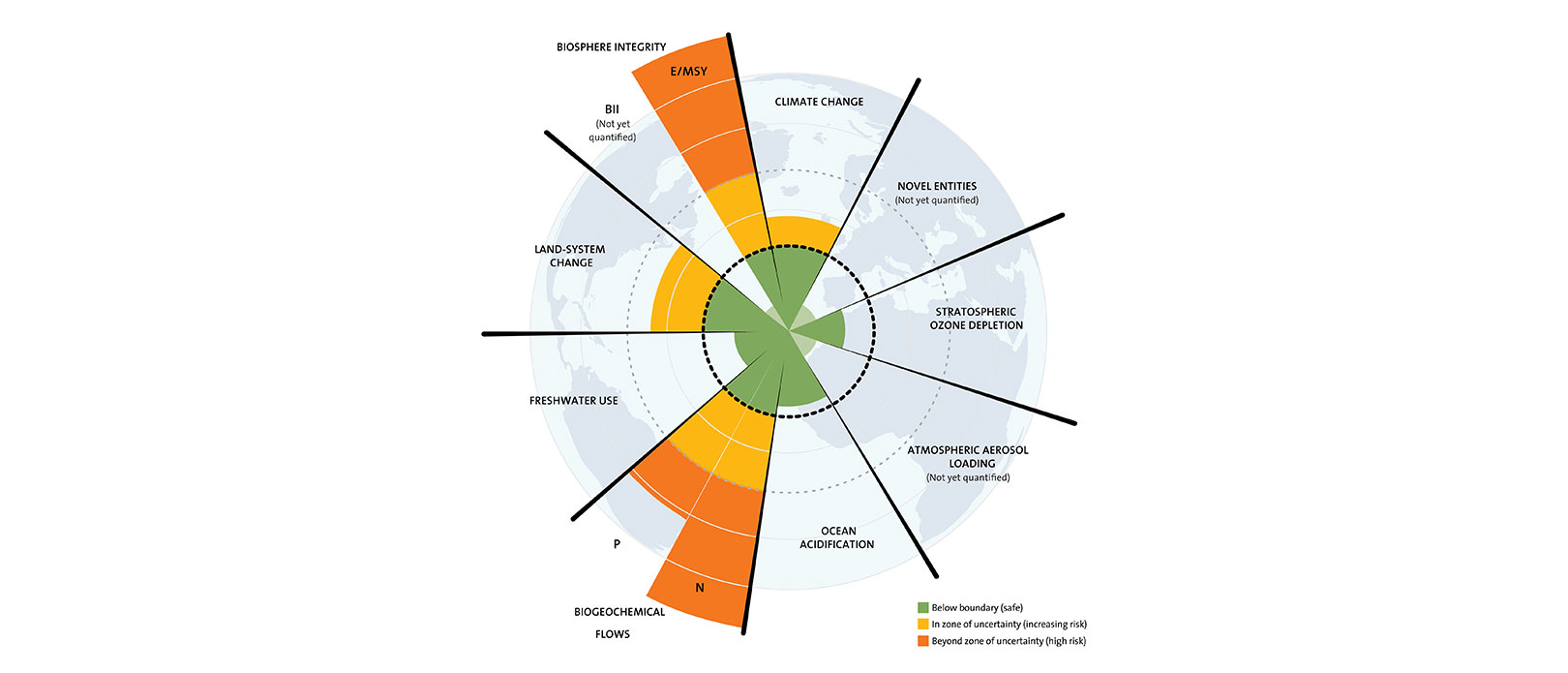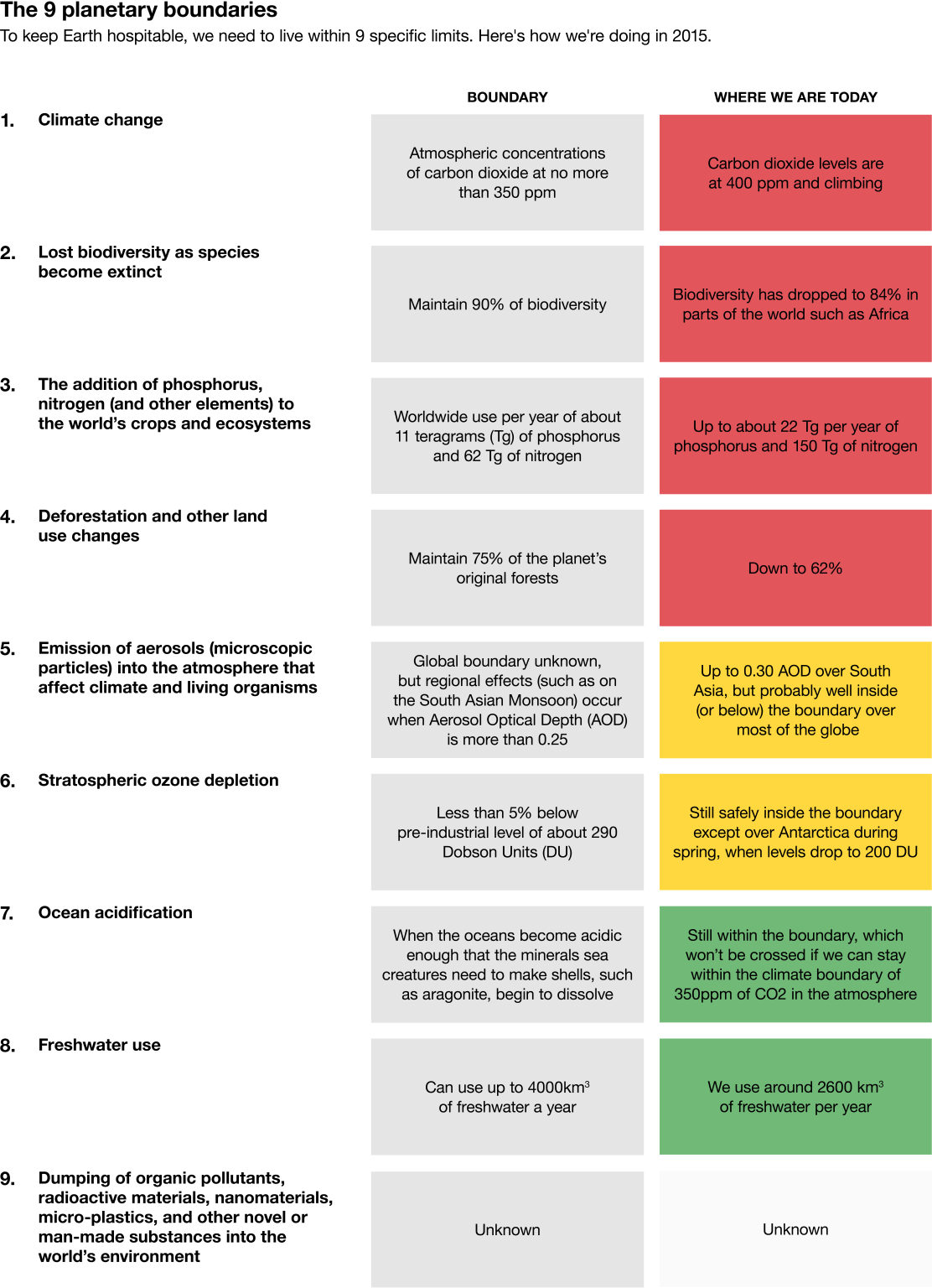Nine Planetary Boundaries
Posted on Feb 9th 2021
Understanding Planetary Boundaries and Sustainability
"The planetary boundaries concept presents a set of nine planetary boundaries within which humanity can continue to develop and thrive for generations to come."
In 2009, the former Director of the Stockholm Resilience Center, Johan Rockström, and 28 scientists proposed the concept of " The 9 Planetary Boundaries" - quantitative boundaries within which humanity can continue to thrive. If these boundaries are crossed, the chances of catastrophic and potentially irreversible environmental changes become much higher.

We have found tremendous value in this framework of 9 Planetary Boundaries. As we at EcoEnclose read about issues ranging from nitrogen runoff to recycling challenges that are leading to more landfill waste to gyres of plastic pollution in the ocean - it can be difficult to make sense of the varied and sometimes competing issues we need to address. This framework helps us summarize and visualize these different ecological threats, and assess which ones are most pressing because of how quickly humanity is crossing irreversible thresholds.
Reviewing these nine planetary boundaries and research from 2015 demonstrating that four of the boundaries have been exceeded (and several others are dangerously close), helps give us clarity on the issues we need to maintain as core to sustainability focus - biodiversity loss, phosphorous and nitrogen runoff, climate change and land system change. This means we (we as in society, policy as well as we as in EcoEnclose) need to focus on reducing carbon emissions and curbing the negative impact of intensive industrial agriculture as our most critical priorities.

Image above published by TED.com. Click here for the full article.
We do recognize that there are limitations of these planetary boundaries. Newer concepts - such as aerosols and novel entities entering the environment - are not yet studied in enough depth to have concrete boundary numbers associated with it. The framework is human-centric, and doesn't necessarily explore the impact of environment change on other species (for the sake of these species alone). And, most importantly, it considers humanity as an entire system. Given this, the framework isn't designed to consider how individuals and specific communities will experience issues on a more localized level. Issues like air pollution and water quality are quantified at more global levels. The impact of pollution in a single body of water or city, and how this directly impacts the health and quality of life of residents, is not made obvious. With these limitations in mind, EcoEnclose continues to bring in other frameworks and concepts as we make sustainability decisions, largely to help ensure we are considering environmental justice issues alongside global and systematic ones. But we find that in most cases, the strategies that help curb greenhouse gas emissions, reduce toxic and chemical runoff, and promote biodiversity are typically ones that also support issues of environmental justice.
Johan Rockström on the Planetary Boundaries framework at TED Global 2010.

